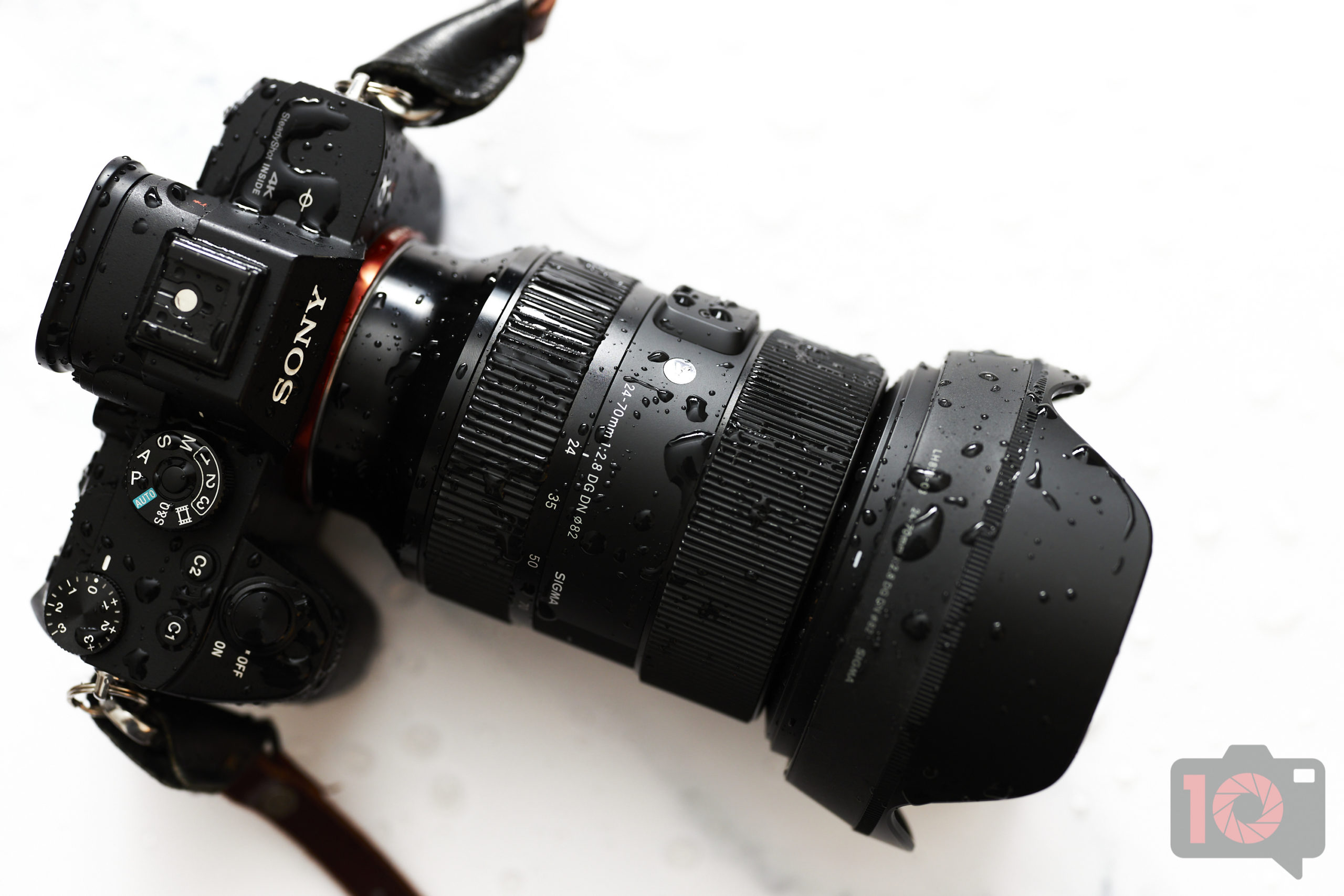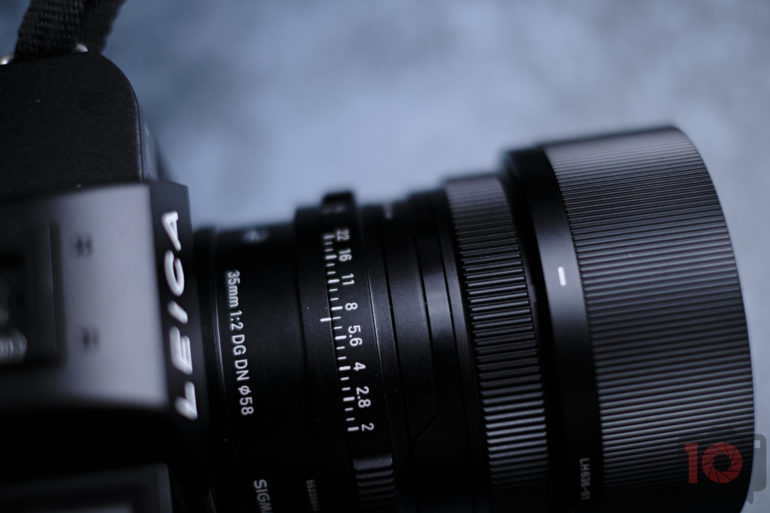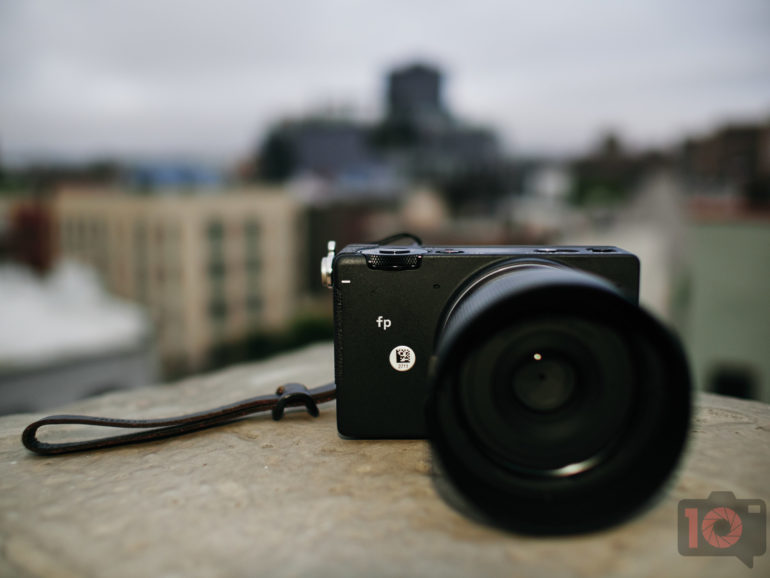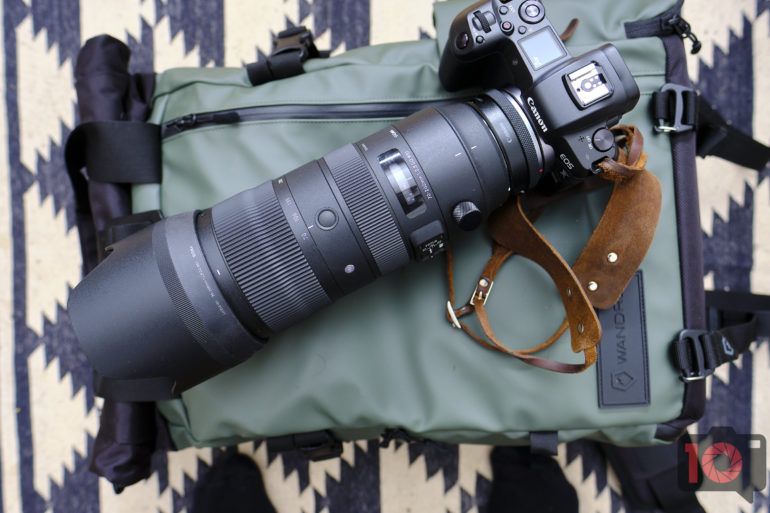For well over a decade, we’ve been reviewing Sigma lenses. In fact, we’ve got the most Sigma prime lenses reviewed of any publication. You can check our Sigma Prime Lens Guide (which I’ll admit needs an update). We’ve also reviewed a ton of their other zoom lenses too, and I own two Sigma lenses for the L-mount. But if I were to think about which of the two Japanese-licensed lens manufacturers would last longer, I’d bet on Tamron. I wouldn’t have said this years ago, but Tamron has ended up playing a brilliant game in the long run. To survive, Sigma needs to try something new. Let me explain.
View this article with minimal banner ads in our app for iOS, iPad, and Android. Get no banner ads for $24.99/year.
Table of Contents
Critiques to Our Previous Reviews and Autofocus
Sigma has been an odd company for us to deal with as press. In conversations with them over the years, they seem like the underdog. If you’re a baseball fan, they’re kind of like the Mets. Being a native of Queens, NY, I should be rooting for the Mets, but I’m 35 and have a decent amount of self-respect.
We’ve often critiqued the autofocus of Sigma’s lenses during our tests. And Sigma has told us the issue is with the camera manufacturers. So we would typically state something along these lines in our reviews of Sigma lenses. But then the L-Mount happened, and Sigma’s autofocus was sluggish even on its own cameras. As Panasonic tells us, the L-Mount shares autofocus algorithms and information through the lens mount. The motors are what differentiate the lenses. But Sigma’s autofocus, while much improved, still lags behind the others.
With that said, we can’t blame the autofocus of Sigma lenses on the camera manufacturer, especially if it’s on their own mount. I’ve seen faster performance from their lenses on L-mount cameras and not on Sony’s.
If you’ve read this site for many years, you might be wondering something. I switched my entire lens system to Sigma almost a decade ago, when Sigma announced their Global Vision program. I owned the Canon 5D Mk II back then, and Canon didn’t care much about innovating. So it made sense to switch to Sigma lenses. But then mirrorless became the mainstay, and a lot that’s inherent to Sigma has stayed the same. They still make enormous lenses that can make me hate using a camera system.
You may be happy with your new Sigma lens, but after a while you’re going to get tired of always reaching for a big, heavy lens. And you might not even be interested in using it if there are autofocus issues.
Let’s not even get into the autofocus on their cameras. Take a look at the video in our Sigma FP review and you’ll even hear notes from our audience on how bad the autofocus was.
Art Quality in Contemporary Lenses
Sigma’s Global Vision program has three branches: Art, Contemporary, and Sports. Any definition you’d try to come up with for the branches makes no sense. I’ve asked over the years, I’ve tried to make sense of it, but there hasn’t been any clarity. One would think the Art lineup has the best image quality and that the Contemporary series doesn’t. But Sigma doesn’t say that. It’s easy to believe that the Sports lineup might be for professional photographers and aimed squarely at them. But Sigma has told us before that that isn’t the case. It’s clear there is no real division between the optical lines. And in recent years, this has really come to the front.
Sigma told the press and various partners that their Contemporary lenses have Art Quality in many instances. Here are a few cases:
Adorama said the following:
“Even though this lens is part of Sigma’s Contemporary line, it has Sigma Art level performance all through the focal range.”
CineD noted the following:
“Sigma have commented that the image quality captured using the Sigma 16mm F/1.4 DC lens has similar performance to the Art range of lenses, which is a promising feature as the Art range are renown for their top notch quality. “
And even we’ve said it:
“Take the new Sigma 28-70mm f2.8 DG DN Contemporary. For the most part, they say it’s an Art series lens.”
It all brings up a huge issue. Think carefully about this.
If a Contemporary lens (or a few of them, in this case) is said to have Art quality, then isn’t Art quality also the same as Contemporary? And if an Art quality lens can be made as small as a Contemporary lens, why aren’t all Art lenses that small in the first place? There’s no way extra weather sealing in Art lenses necessitate their mammoth sizes. At the same time, why can’t Contemporary lenses have the same weather sealing as Art lenses?
To think about that first statement more, consider the Sony G and G Master lineup. There are apparent reasons why you’d buy the G Master lineup: better build quality and image quality. But that doesn’t mean the G Series lenses aren’t fully weather-sealed and don’t have good image quality too. The same can be said for Canon L lenses and Nikon S lenses.
What really made me think about this is Sigma’s move into the Fujifilm X series. A friend of mine considered buying the Sigma Contemporary lenses but wanted the Art series instead. However, the Art series lenses aren’t being ported to Fujifilm X mount.
The Lens Mount Conversion Service and the Confusion Behind It
When you think about the Sigma Lens Mount Conversion Service, you’d assume it’s straightforward. Back when it was announced, it meant you could take your Canon EF-mount Sigma 35mm f1.4 DG HSM lens and convert it. For example, let’s say you moved to Nikon F mount. You’d assume that would be straightforward until you think about it more. For digital, the Canon EF and Nikon F are dead mounts. But for film, they’re still very much alive. So, if you owned a Canon EF mount Sigma lens and wanted to switch to Nikon, you could. For years, Sigma claimed they’d just switch the mount. But if that happened, the focal length, or other things like the flange distance would probably change (which is far different between Canon and Nikon).
Now here’s where it gets stranger. Take a look at the tech specs for the Sigma 35mm f1.2 DG DN lens. The size and weight are different between L-mount and E-mount.
If you were switching lenses from one system to another, wouldn’t you just need a brand new lens? Is the mount conversion service actually more of a system swap service? By that, we mean that wouldn’t it make more sense to just get the same lens for a different mount?
It’s pretty confusing. Again, by the laws of physics, if you just switch the mount connection, different things would happen to the lens and how it interacts with the camera.
Competing Focal Lengths
Competing focal lengths are a big problem in the world of cameras. I think competition is healthy, but I also believe competition needs to have the aim of innovation. A brand that should really praise itself for creating extraordinary focal lengths is Canon. For example, they didn’t just make a 100mm Macro lens; they made one with Chromatic Aberration control. They made their lens stand out from the rest of the pack by doing this. It does something special that folks will value. But lots of other brands just create a variant of something like a 50mm f1.4 and don’t make it stand out. For this, I will consult our fantastic guide to Sony FE lenses.
If you consult the guide, you’ll find around eight different 35mm lenses on the market for Sony FE. But is there enough to make them stand out? Let’s take a look at what defines each:
- Sigma 35mm f2 DG DN Contemporary: Offers what they say is Art level image quality for a bit more than $600 with weather sealing only at the mount and autofocus that leaves you wanting. Metal construction and a metal aperture ring makes it feel like a Leica.
- Rokinon 35mm f2.8: A variant of Sony’s with no weather sealing and autofocus that can truly suck in low light. Personally, I wouldn’t get it.
- Tamron 35mm f2.8: An insanely well weather sealed lens, but the autofocus in low light can be a bit much. Granted, we tested this on the Sony a7r IV: a camera that hasn’t given much of the current staff a lot of faith. Tamron has unique colors, but they nerfed the lens flare into oblivion with this lens. This is also the most affordable, feature packed of the lenses out there. It’s so much larger than the Sony 35mm f2.8.
- Sony 35mm f1.4 GM: Basically the GOAT for $1,399. You get weather sealing, autofocus performance, image quality, and even a bit of lens character. There’s also an aperture ring.
- Sony Zeiss 35mm f2.8: I owned this lens and gave it away to a friend. It’s okay, and it’s very small. But Rokinon basically makes the same lens with worse autofocus, slightly worse optics, and no weather sealing. It offers more lens flare than Tamron’s does too.
- Sigma 35mm f1.4 DG DN Art: At under $1,000 you’re sacrificing weather sealing and autofocus performance. We also note that the images feel flat. And it’s larger and heavier than Sony’s GM.
- Sony 35mm f1.8: I use this one myself. It’s around $700, has a fast aperture, fast autofocus, and is small and fully weather sealed. It’s a very easy choice over Sigma’s contemporary and even over Sony’s own 35mm f2.8.
- Zeiss Loxia 35mm f2: Full weather sealing, manual focus, and it can make some really nice images. But it’s almost as expensive as Sony’s G Master. And I’ve seen it go for only $500 second hand.
- Sony Zeiss 35mm f1.4: I absolutely LOVED this lens. Looking back, there’s a magic about the colors of this lens that makes me wish the Sony and Zeiss relationship didn’t fail.
- Sigma 35mm f1.2 DG DN Art: I owned this lens at one point. But it’s so large and so heavy it made me never want to shoot with Sony cameras again. So I got the 35mm f1.8 and traded this.
So what can we observe from this?
- Zeiss did something completely different than what Sony did.
- Sigma offered a 35mm f1.2, but made it huge and impractical in some ways.
- Sigma made a 35mm f1.4, but made it larger, slower, and heavier than Sony’s 35mm f1.4 GM.
- Tamron made something different in a 35mm f2.8 while offering insane weather sealing and arguably better ergonomics.
- Rokinon stripped what Sony did with their 35mm f2.8 and made something more affordable. To my knowledge, it didn’t sell that well.
- Sigma has a metal lens with a slower aperture in their 35mm f2 while Sony makes a 35mm f1.8 with full weather sealing but a more plastic body.
- Sony’s Zeiss collaborations were nice.
If we look at all this, it seems like companies like Zeiss and Tamron were trying to fill in the gaps for what Sony didn’t have. Sigma and Rokinon, on the other hand, are trying to compete directly with Sony. Rokinon doesn’t work with Sony or become officially licensed, but Sigma did.
So, enough of a rant. Here are some ways companies can stand out and remain competitive:
- Weather sealing.
- Durability. Brass lenses and weather sealing together could be nice. Very few brands are making brass lenses, even though I know tons of folks who love them.
- Unique image quality. How about bokeh shape control, or CA control, or a built-in CPL filter? There have to be ways to make image quality stand out from the rest.
Let’s put it another way: think about the camera space. One of the arguments for shooting Sony vs. Panasonic or Nikon is the sensors. I’ve often heard folks ask why they should shoot Nikon if Sony has the same sensor and more lenses? Similarly, why would I shoot with a third-party lens if there’s nothing that makes it stand out?
Brands need to try harder to differentiate themselves and not always make the same things over and over again.






